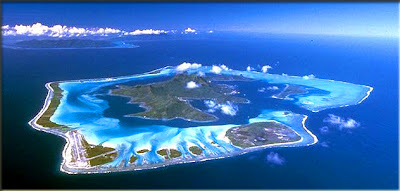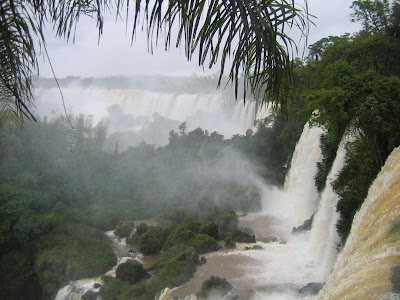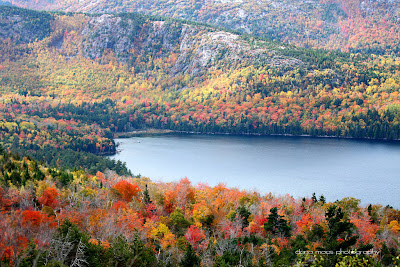"There must be a higher love/Without it life is wasted time." Those are the opening words to one of my favorite Steve Winwood songs. What could a higher love mean in your life - in the life of your clients?
Often, during a speaking engagement, I include a potent and important word that has people flinch -- "Love." They try to manage their flinching by adjusting their seats so that their neighbor or I won't notice. But, however subtle the movement, there it is. I'm not sure what all that flinching is about, but it makes me smile and piques my curiosity.
I've always been interested in what we are afraid of when it comes to love -- be it love of self or other. Certainly it is what we all desire, right? Now I'm talking real brotherly/sisterly love --universal love --not that acting like you care, "has a nice day" kind of sentimental formality. Why does the act of sharing love beyond the parameters of family and friends make us shift in our seats? Is it that we don't believe in it? Don't know how to attain it?
Bringing a higher love to coaching and any other relationship for me means letting it all go. All those wonderful mechanics we put in place to make us feel safe have to go. "Letting go" means taking off the armor and putting down the shield -- in whatever form it takes --that we use to defend ourselves should love be used against us or withdrawn from us at some future date. Letting go means putting aside those mental structures, such as judgment and comparison, which act as filters when we decide how to present ourselves to the world. It means not checking to see if we are safe enough to be ourselves or don one of our many personas. When we filter our interactions with the world in this manner, we remain cut off from ourselves, our source, our heart. The problem with letting go is that we have nothing to hang onto when we do so. It can feel like going into free fall without a parachute.
 |
| Beautiful Love Wallpaper |
 |
| Beautiful Love Wallpaper |
 |
| Beautiful Love Wallpaper |
 |
| Beautiful Love Wallpaper |
 |
| Beautiful Love Wallpaper |
 |
| Beautiful Love Wallpaper |
 |
| Beautiful Love Wallpaper |
 |
| Beautiful Love Wallpaper |
 |
| Beautiful Love Wallpaper |
Our parachutes are the relationships we invest in, which include the relationship with ourselves. True investment, on the other hand, means we stack up the chips of love against all else, and we bet it all on love. Sure, it's risky, but playing it safe doesn't really make us feel safe anyway. So what are we really risking? When we orient ourselves from Love, what we are risking doesn't feel so scary because the focus is on who we are being in each moment -- no conditions, no pretenses, no strings attached. When we orient ourselves from fear, then each moment is a calculated, high-risk venture because so much of what we are betting on with fear has to do with our perception of "the other." And so we hedge our bets; we lock and load our filters.
In the space of unconditional love, a coach's hearing is fine tuned to hear beyond the words of the client to hearing the energy of them - a much richer space to be in. We are no longer listening for the love we need or the attack we expect. Our listening moves from the ego's power-hungry center to the heart's welcoming center. In love, there are no boundaries regarding what we would risk saying, asking or telling in the interest of our clients' well being. From the space of Love, I will risk sounding unprofessional, like a judging machine or even vulnerable. You name it; I'd risk it. In my experience, mistakes made out of love have had far more success then any hard wired, logical sequence of inquiries my mind could create. Love is illogical to the mind and thus follows a more fluid, intuitive, divine pattern. It gets into places the mind hasn't even imagined let alone conceptualized. Sometimes I'm even afraid of what Love asks me to say to my client. I often refer to this type of interaction as "Coaching with Pampers."
I had been coaching one client for over a year and we were getting nowhere very slowly. While coaching him, I found myself multitasking: making grocery lists, counting lint and wanting to read my e-mail when Love pulled on my earlobe and whispered, "Tell him the truth." My face froze at the nudging and my heart rate increased. How could I tell him what I truly thought? It was too rude, crude and he'd hate me for sure. And Love responded cheekily, "Good thing this isn't about you then." So I took a deep breath, envisioned pampers where my underwear should be and said, "You know I love you, and I've got to tell you that you are a man without a spine; and a man without a spine will never move forward." I continued, "I don't think this is how you meant to be living your life, and I know inside of you lives a man of great courage. Can I coach him now?" Then I shut up, and the line went silent. After a month of being really angry with me he called and said, "I have been really mad at you and really grateful. You were the only one to tell me what I've known about myself for years. I'm ready to grow a spine and live my dreams. Will you help me?" I'm not sure how long we cried together. The moment transcended time. I guess that's the power of Love.
When I allow Love to lead the way in my coaching, I am w-a-y over there with my client -- my agenda, my great ideas and my inhibitions long forgotten. For the love of my client's dreams, visions, goals and success I'd risk it all -- even being wrong or offensive. When the coaching is tempered with Love clients can hear anything and everything a coach has to say because they can feel that you are in it for them. In fact, you may be the first person they feel is really in it for them without any hidden agendas!
As our clients come to understand that their coaches are not just another professional with strategies and techniques but, instead, are allies in their lives, they come to trust that, regardless of what they reveal to us, we will hold that space for them and still love them. By teaching our clients that judgment cannot reside in the space of loving connection, we free them -- and ourselves -- from the fear of rejection. Love literally helps shift us from a perspective of suffocation and limitation to embracing liberation. When clients shift their perspective, their worlds change. And life flows easily once the passageway is cleared. Once they are released from withholding all of whom they are and from fear of rejection and shame, clients become more available to themselves. Eventually their negative mental chatter quiets.
Have you ever seen a child who has not been loved? There is a deep pain where love never goes much less lives. If that child doesn't receive love, he or she is never quite right. And, through that pain, suffering builds a stronghold in his or her spirit. Whenever we are in pain and there is no love to comfort us, we are suffering and alone. What an unbearable existence! We were meant to thrive not exist. Sure, some pain is part of living, but so is comfort and loving kindness, and that comes in the form of the human exchange of love.
Another client I coached for a few months revealed to me a case of molestation as a child. This was something she had never shared with anyone, not even a therapist she had seen several years back. I had to inquire, "What made you share this information with me?" She responded, "Because, with you, I knew that, no matter what I had done, you would see me as beautiful and worth loving." Love coached this woman, and I was happy to be the conduit. Through our mutual admiration, respect and love, she later learned to trust another therapist to move him through her pain. That afternoon, her response sold me on the power of Love and altered my coaching and my interactions with people forever. "Wow!" I thought, "If Love could lift that boulder from her back, then we are both lightened."
Many people have told me that they became coaches to help make a difference in people's lives. In making that difference or having a positive impact for the sake of our clients, we must distinguish ourselves from the amateur who is inexperienced or unskilled in love. Whether I am coaching a high level executive or a prison inmate, I find that the capacity to love my clients enhances my ability to coach them. When I let go of the rules of society that dictate distance and formality in the name of professionalism, I find that we are just two human beings sharing a very real human experience -- connectedness. The Random House dictionary describes professionalism as "the standing practice or method of a professional, as distinguished from an amateur." Well, there you have it. But why bother? Sure it sounds plausible, but you may ask yourself can I an executive coach, a sales coach, teen coach, business coach really cross that boundary of professionalism? More importantly, am I willing to redefine professionalism to accommodate the very real needs of my client in a given moment? Are you?
Ultimately, Love is the only thing that matters and, because this is so, Love is the only thing that makes change possible and permanent. Stop to think of what you have changed in yourself. I'm sure Love was part of the equation. Will power just isn't enough to sustain clients in the long run. Love is the fuel when the will power of being goal oriented burns us out.
One of the reasons I am in the coaching profession is the fact that we have permission to love our clients deeply. Being with my client up close and personal there is a honoring of their humanity that allows them to relax into the relationship revealing things that have been walled away for many a lifetimes.
To love our clients deeply, to reveal our willingness to love unconditionally puts us in a vulnerable space. As humans, we are always teaching one another how to walk in the world. As coaches, we have an opportunity and a responsibility to model deeper universal truths that manifest the vastness of bigger possibilities. The modeling of vulnerability calls us forth to stand in the light -- client and coach. Once exposed to the light of Love, those dark secrets that hindered personal and/or professional success cease to have ultimate control and, thus, no longer dominate how clients respond and interact with their world. Counterintuitive as it may seem, vulnerability isn't about people taking advantage of us or standing by patiently while they attack us. Quite the opposite, vulnerability entails opening our hearts to the love that is forthcoming, and expanding our capacity to love others. Vulnerability is an act of loving trust.
We'll never find a better teacher than Love. Love teaches me without shame. It has me stay in relationships when I'd rather run away. When I find my clients boring, unwilling to move, grow or change, Love tugs at my ear, reminding me again to stop putting boxes around them. Love wipes the fog of judgment away from eyes, allowing me to see how my lack of vision for my clients stunts their growth -- and mine. Instead of making them "wrong" with my limited vision, Love shows me how to witness their pain, struggles and efforts with compassion and grace. When I stifle my client, I stifle myself, and Love flees. In those precious few moments we have with our clients, we have the power to create an intimate cocoon and to bringing a higher love into the space. This action creates a life-sustaining force that grounds both client, coach, and serves as a beacon when either party looses them self to the chaos of the ego's persuasive, self-indulgent chatter.
Loving is the simple practice of softening one's heart to feel another's. We begin by stopping any objectifying of our clients that we may be doing. We start holding them as the most important subject of interest. Even the simple task of moving from thinking of them as a group of clients to individualized relationships allows us to co-create something very different. By this simple practice, we become vulnerable to that most needed commodity -- compassion, this "feeling with" that engenders empathy and loving-kindness. The energy field of unconditional love releases us, and our clients, from the polished and superficial skills of manipulation, hiding, lying and being scared of not being accepted for who we are. It grants us permission to step out from behind our mascaras, our masks.
One thing I know for sure and my coaching experiences support this: every person I have coached has shared with me, in one form or another, his or her desire for the freedom to love and be loved. To be truly loved -- warts and all. Every client -- be it doctor, lawyer, coach, financial planner, chef, parent, teen, inmate, Christian, Jew, Buddhist, Native American, spiritual follower --wants the same thing: Love, pure and simple. And why not? It is the birthright of each and every one of us to love and be loved.



































